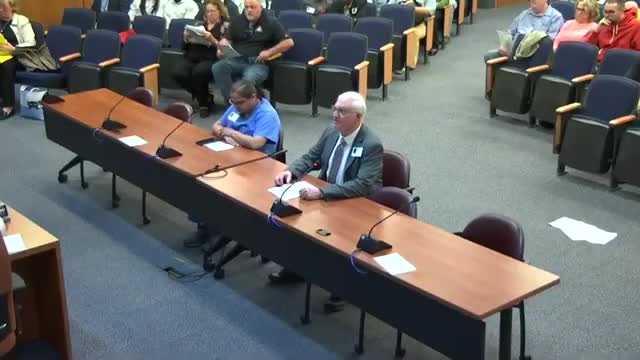County Council reviews Knabbs Creek zoning amendment proposals amid public opposition
April 23, 2025 | Anne Arundel County, Maryland
Thanks to Scribe from Workplace AI , all articles about Maryland are free for you to enjoy throughout 2025!

This article was created by AI using a video recording of the meeting. It summarizes the key points discussed, but for full details and context, please refer to the video of the full meeting. Link to Full Meeting
One of the most contentious topics was the proposed rezoning of an 18.56-acre parcel on Knabbs Creek Road from Residential Low Density (RLD) to Residential Medium Density (R2). This change would allow for the construction of up to 53 homes, a shift that many residents argue would lead to overdevelopment and strain local infrastructure, including roads and schools. Community members voiced their opposition, emphasizing the need to preserve the area's natural environment and maintain the current zoning, which limits development to one house per five acres.
Judith Patel, a Glen Burnie resident, raised questions about the necessity of maintaining separate workforce housing regulations alongside the recently passed Housing Attainability Act. She suggested that if the new act sufficiently addresses workforce housing needs, the existing regulations might be redundant. Patel also proposed stricter criteria for developments in R5 zones to prevent developers from exploiting zoning flexibility.
Residents like Donald White and Tom Barber articulated their concerns about the environmental impact of the proposed rezoning, citing potential pollution risks to local water sources and the destruction of wildlife habitats. They called for comprehensive environmental and traffic studies before any decisions are made, arguing that the proposed changes do not align with the county's long-term planning goals.
In contrast, some property owners, including David Katz, supported the rezoning, arguing that it would restore previously established rights and accommodate much-needed housing. Katz emphasized that the proposed development would consist of market-rate single-family homes, which he claimed would align with the goals of the Housing Attainability Act.
The council's discussions reflect a broader tension between the need for increased housing options and the desire to protect community character and environmental integrity. As the meeting concluded, the council members were urged to consider the long-term implications of their decisions on both the community and the environment.
Moving forward, the council will need to balance these competing interests as they deliberate on the proposed zoning changes and consider the feedback from residents. The outcome of these discussions will likely shape the future of housing development in Anne Arundel County, highlighting the importance of community engagement in local governance.
Converted from County Council Meeting | April 21st, 2025 meeting on April 23, 2025
Link to Full Meeting
Comments
View full meeting
This article is based on a recent meeting—watch the full video and explore the complete transcript for deeper insights into the discussion.
View full meeting